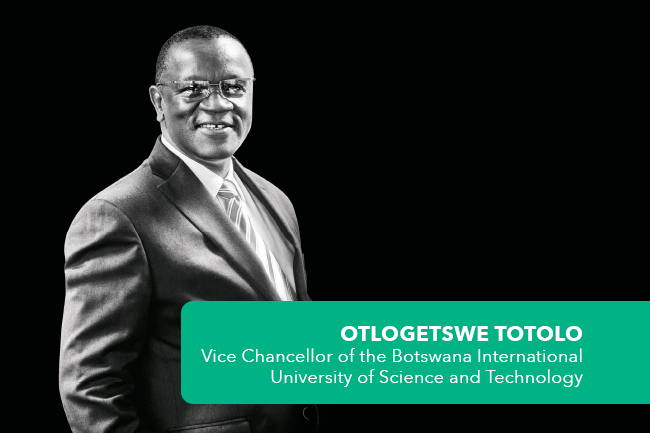From time immemorial, we have learnt and progressed through science. Combined with the introduction of technology and engineering, the way we understand our planet and the nature of all things, as well as how we grow and sustain, requires enormous amounts of investigation to provide us with the most accurate solutions for our continued survival.
Therefore, it cannot be underestimated how valuable learning environments such as the Botswana International University of Science and Technology (BIUST) are. Situated in the country’s Tswapong Hills, its probing research is proving to be a catalyst in providing knowledge and solutions that impact on local, national, regional and international environments.
BIUST is positioned to be one of the key drivers for transforming Botswana’s economy from a resource- to a knowledge-driven base. Not only is the country now able to produce its own scientists and engineers, it is also becoming known as a destination for teaching and providing such skills in the international market space. Although not yet at full infrastructure completion, BIUST is already hosting 1 700 students, some of which are international boarders.
At full capacity, BIUST is able to serve some 6 000 full-time undergraduate, masters and doctoral students from its ecologically diverse 2 500 ha site in the south-eastern part of Palapye. The objective is to make an impact not only on the immediate neighbourhood, but at regional and international levels too.
‘We are providing solutions to local community problems and in this way playing a key leadership role in developing Botswana’s knowledge economy,’ according to Professor Otlogetswe Totolo, Vice Chancellor of BIUST.
‘BIUST’s position nationally is actually transcending regional integration, and our collaborations in the science, engineering and technology fields are aimed at solving African and global problems. Through the utilisation of international talent and the transfer and adoption of global knowledge, we are able to adapt solutions to local needs and provide industry and tertiary level education and research institutions with much-needed information,’ says Totolo.
It is those global links, along with other African institutions, that has allowed BIUST to embark on a research and innovation strategic planning process. Totolo confirms that ‘this will provide us with a blueprint for the acceleration of scientific progress and intensification of research development and innovation’.
He adds: ‘One of the outcomes has resulted in the formulation of other strategic priorities that can be related to key performance indicators that will allow BIUST to fulfill its mission of producing world-class research and innovation in the fields of engineering, science and technology.’
It is through BIUST’s efforts that there is an understanding of the cause of the April 2017 earthquake in the Boatlaname region; the early Mesozoic siliciclastic deposits of the Kalahari Karoo basin; the source of folded quartzites in Topisi; rainfall trends and historic drought in the region; and other water loss and treatment issues.
BIUST research has also focused on wireless technology, solar tracking systems, specific power and mining-related technology and transport. Additionally, BIUST is involved with the AVN project of SKA South Africa in housing facilities that will be used to develop the capacity to operate and maintain an antenna for the ground-breaking telescope.
In fact, there’s not much that BIUST doesn’t touch, and it is particularly strong at developing patents. ‘A key mandate of any research university is to perform research that has developmental impact so that society realises the benefits of the research it conducts,’ says Totolo. ‘This is primarily through turning research findings into tangible technological products and services.’
One such patent developed by BIUST is a farmyard monitoring system, which includes automatic livestock counting and access control to enhance the efficiency of livestock management. Another is an electrical switching system for a building or installation that is designed to optimise power consumption.
Another BIUST strength is its partnership with House of Hope, which emerged as a foundation in preparation for a visit from Cincinnati University in 2015. House of Hope was identified as the recipient of donation aid that Cincinnati University visitors provide, and as such motivates for the care of orphaned and vulnerable children, and those that are infected or affected by HIV/Aids. House of Hope also offers free pre-school enrolment for registered orphans and vulnerable children. It also forges relationships between a sponsor and a child’s caretaker/guardian or other family members.
Women too are uplifted through BIUST offering free business courses to those who currently own and/or manage a local business, or are equipped to begin a business. According to Totolo: ‘We also provide out-of-school unemployed women with apprenticeships or skills training so that they can advance income-generating businesses.’
With some 20 MOUs with partners that include universities in Scotland, Romania, South Africa and Japan as well as private, continental and global corporations, Totolo says that ‘BIUST is set to assist institutions to be innovative and entrepreneurial, particularly in the higher-education industry’.



